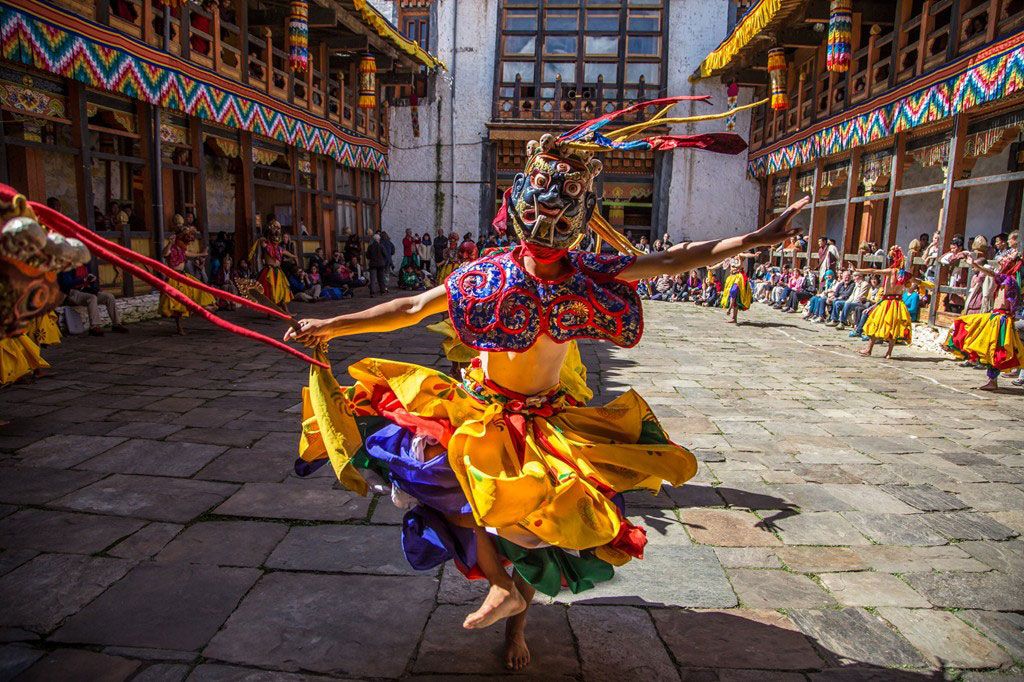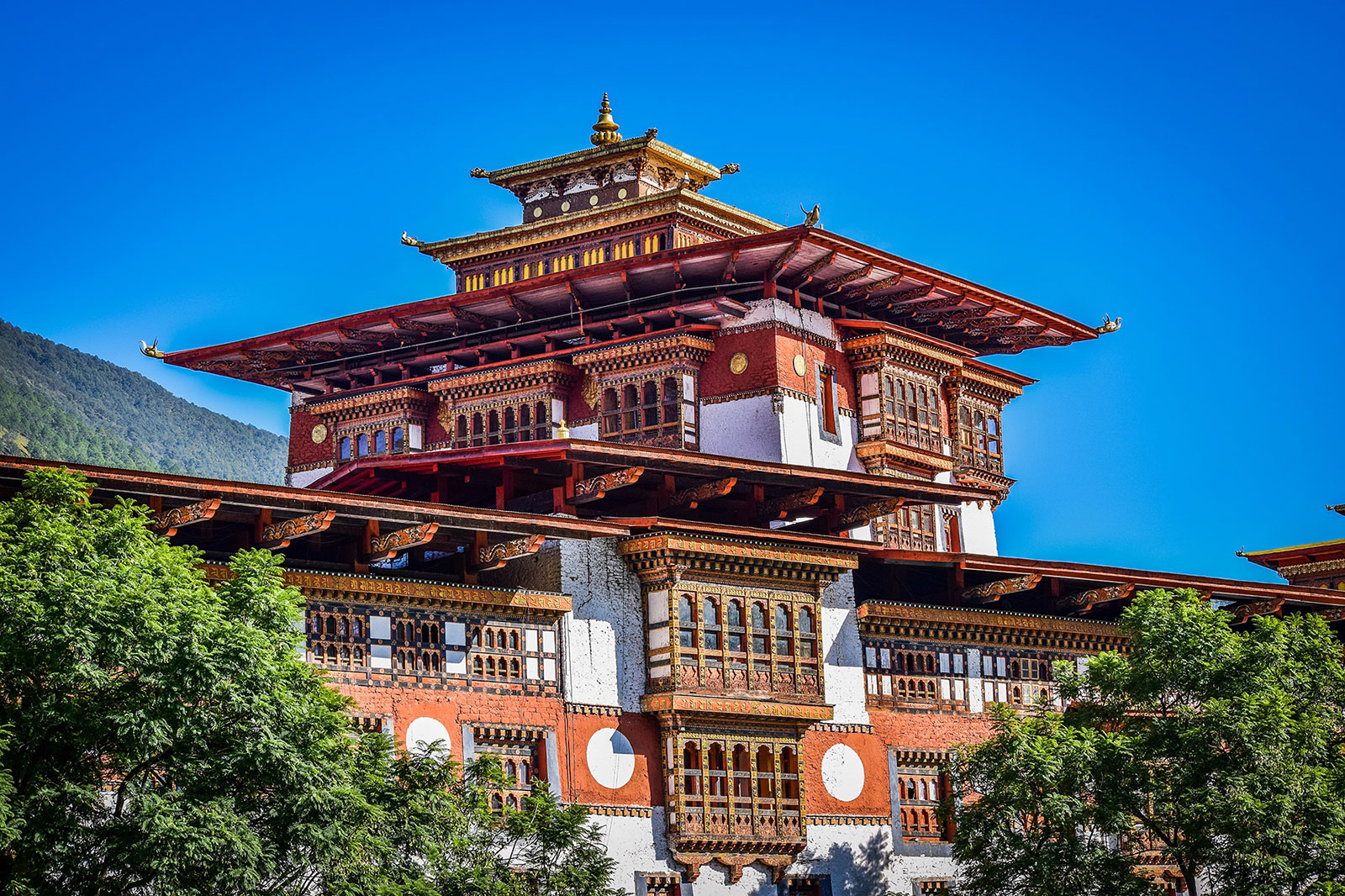The culture and Tradition of Bhutan is uniquely Bhutanese, which attains the status of a distinctive culture in the world. Rich tradition and culture has been a biggest strength for Bhutan and it has served as a weapon for protecting the nation’s sovereignty. The everyday life of the Bhutanese portrays the distinctive Bhutanese culture and tradition.
Birth of a child
Gender discrimination does not exist in Bhutan especially in birth of a child. For first three days following birth of the child, the friends, neighbors and relatives do not visit the house as it is believed that the house is polluted by kaydrip (kay- birth drip-defilement). Thus, Lhabsang, a ritual is conducted to purify the house, after which the outsiders visit the house with gifts to bless the new born and congratulate the family. In rural places, the common gifts include rice and dairy products, whereas in urban areas the gifts are commonly the clothes and money.
Bhutanese prefer the name of the new born to be given by highly regarded holy person. In rural places where people worship local deity, the child’s name is associated with the deity. Rarely, the name of the child is associated with the day on which the child was born. Kye tsi, the horoscope of the baby is written based on Bhutanese calendar. For precise prediction of the baby’s future, the accurate time and date of birth are must. The Kye tsi would also advise on different rituals to be conducted at different stages of child’s life as remedy to possible illness, problems and misfortunes.
Traditionally, Bhutanese do not celebrate birthdays. However, birthday celebration has become popular especially amongst the urban dwellers.
Institution of Marriage
Arranged marriages were popular in the past. Normally, marriage took place among the relatives. In eastern Bhutan, it was a popular tradition to have cross-cousin marriage. However, such tradition is getting unpopular and extinct as many Bhutanese prefer to marry a person of their choice.
The conduct of marriage is simple with a holy person performing a small ritual. Dinner parties are organized in some cases. Along with gifts in the form of cash and goods in most cases during the ritual, the parents, relatives and the friends present kha-dar (scarves) to the couple.
In western Bhutan, husband lives with the wife’s family after marriage while in the eastern Bhutan it’s just the reverse. This is not a rigid practice. It is up to the new couple to set up their own household on their own plot of land or settle elsewhere. Divorce exists in the Bhutanese society and does not carry stigma. However, any of the party seeking separation has to pay compensation.
Funeral
The traditional funeral rites are expensive making death an expensive affair. For good rebirth of the departed soul, many rituals are performed. Rituals are performed on the 7th, 14th, 21st and 49th day after death. Hundred and eight prayer flags are erected after the person’s death. Advise on favorable day for cremations is sought from the local astrologer before the 7th day ritual. Death anniversary is generally observed with elaborate rituals being conducted for three consecutive years. The relatives, friends and neighbors attend these rituals.
Dress
Men wear gho, a long robe that is pulled till knee, folded backwards and then tied around the waist by kera, a woven belt. The pouch formed in the front above the waist is very useful in carrying bowl, money and doma (areca nut and betel leaf eaten with a dash of lime). Men generally insert a knife in the belt from inside the pouch. The tribal and semi nomadic people like the Bramis and Brokpas of eastern Bhutan and the Layaps of western Bhutan do not wear gho but have a unique dress of their own. The dress of Brokpas and the Bramis is made of yak hair and sheep wool and animal skin is hung over it. They also wear a hat with five fringes hanging from the sides. The Layap men wear gho but the dress of women is a loose outfit that is hung up to their calves. Both men and women’s dresses are made of yak hair. They wear a conical bamboo hat on the head.
Formal visits to a Dzong or an office require Bhutanese men to wear a scarf called kabney and it is an important part of the Bhutanese decorum. The kabney also identifies the official rank of a person. The King wears yellow scarf, minister orange, judge green, and district administrator red with a white band going lengthwise and common people white with fringes etc.
Women wear kira, a long woven cloth let down up to the ankle length. Kira is tied around the waist by a woven belt. Women also wear the scarf called rachu. Rachu, which is smaller than a kabney is hung over the shoulder and it is beautifully hand woven with fringes at the end.
Dietary and Eating Habits
Bhutanese eat with hands traditionally. Eating with spoons is not a tradition among Bhutanese. Bhutanese still use traditional plates such as dapa/dam/dolom (made of wood) and bangchungs (made of bamboo). Before eating, some morsels of rice mixed with curry are tossed in the air as offering to the deities and spirits. Ema Datsi (chili cooked with cheese), Paa (sliced pork and beef) and red rice are the favorite Bhutanese dishes. Any dish is considered incomplete without chili. Salted butter tea (suja) is commonly served during breakfast. In rural areas, ara or the home brewed alcohol is served to the guests. Doma (betel leaf and areca nut eaten with a dash of lime) is chewed by most Bhutanese and as a result it is not uncommon to see most Bhutanese with stained teeth and extraordinary red lips. It is an act of friendship, politeness and mark of generosity to offer Doma to someone.
Festivals
Tsechu or colorful mask dance festivals in the Bhutanese calendar are performed in all the Dzongs and in many monasteries and temples across Bhutan. The event in the life of Guru Rinpochoe, who is revered as the second Buddha in Bhutan is commemorated through conduct of annual Tshechus. During the Tsechu, Thongdrol or large scroll paintings of deities and saints is displayed. Bhutanese believe that a glimpse of Thongdrel can liberate people from sins. People from all walks of life gather during Tsechu to witness this significant event. There are many other festivals unique to different villages. The festivals are also the moments to see people with their finest clothes and jewelries.We do make Tour package on Festival Tours along with cultural Tours.









